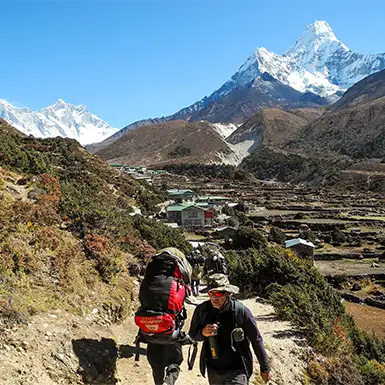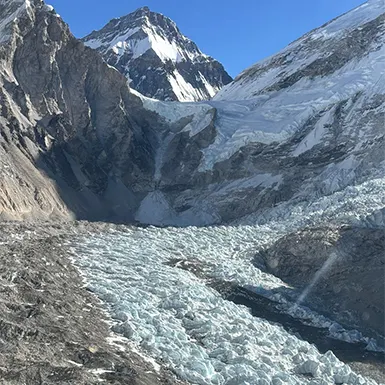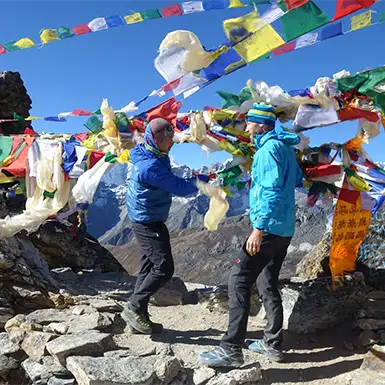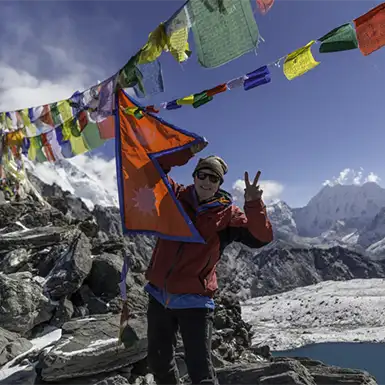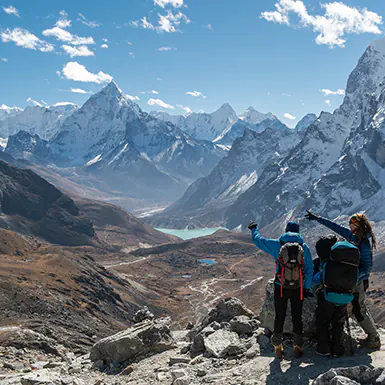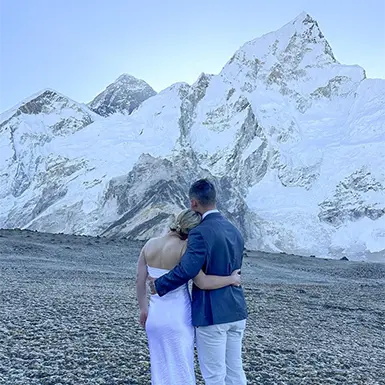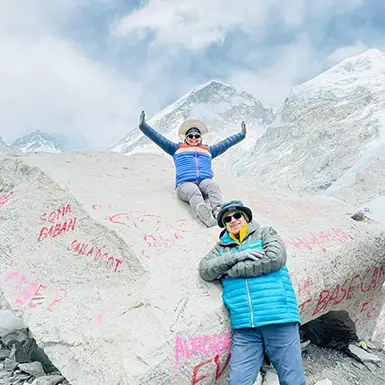Exploring Local Life, Community, and Amenities in Pangboche Nepal
Pangboche Nepal offers much more than a mere stopover on the trekking route to Everest Base Camp. It provides a rich cultural experience and a glimpse into the daily life of the local Sherpa community. Additionally, Pangboche offers a variety of accommodations and amenities that cater to trekkers and visitors.
Local Life and Community in Pangboche
Pangboche is home to a vibrant Sherpa community whose daily lives reflect a deep connection to their traditions and the natural environment.
- Daily Life in Pangboche: The residents of Pangboche lead a lifestyle deeply rooted in their cultural and religious beliefs. The Sherpa people are known for their warmth and hospitality, often welcoming trekkers into their homes for tea or a meal. Their day-to-day activities include tending to livestock, farming, and participating in community rituals at the Pangboche Monastery.
- Traditional Sherpa Homes: In Pangboche, Sherpa people typically construct their homes from local materials such as stone and wood. They design these homes to withstand harsh weather conditions at high altitudes. These houses often center around a hearth, which provides heat and a cooking area.
- Agriculture and Local Crafts: Agriculture plays a significant role in the local economy, with residents growing potatoes, barley, and vegetables in terraced fields. The community also practices traditional crafts, such as weaving and wood carving, often sold to tourists as souvenirs.
The Role of Tourism in Pangboche’s Economy
Tourism has become a vital part of the economy in Pangboche, providing income and employment opportunities for the local population.
- Economic Impact: The influx of trekkers and climbers to Pangboche has led to the growth of various businesses, including teahouses, lodges, and shops selling trekking gear and local crafts. Many residents work as guides, porters, or lodge owners, contributing to the village’s economic stability.
- Community-Led Conservation Efforts: The community in Pangboche has also taken steps to preserve its environment and culture. Some initiatives include maintaining clean trekking routes, promoting sustainable tourism practices, and participating in reforestation projects to protect the local ecosystem.
Accommodation and Amenities in Pangboche
Pangboche offers a range of accommodations and amenities designed to meet the needs of trekkers and visitors, making it a comfortable and convenient stop on the way to Everest Base Camp.
- Types of Accommodation: Visitors to Pangboche can choose various accommodation options, from simple teahouses to more comfortable lodges. Teahouses provide basic amenities like a bed and shared bathroom facilities, while lodges may offer private rooms, hot showers, and more extensive services.
- Dining Options: Trekkers can enjoy traditional Sherpa cuisine at the local teahouses and lodges. Meals often include dishes like dal bhat (rice and lentils), momo (dumplings), and thukpa (noodle soup). These hearty meals provide the necessary energy for trekking in high-altitude conditions.
- Availability of Amenities: Despite its remote location, Pangboche offers several modern amenities for visitors. Many teahouses and lodges provide internet access and charging stations for electronic devices, although these services may come at an additional cost. Basic medical facilities are also available, with some teahouses keeping first aid supplies on hand for trekkers who need assistance.
Nearby Attractions and Trek Extensions
Pangboche, Nepal, is a gateway to many spectacular sights and experiences in the Everest region. While it’s renowned as an essential stop on the route to Everest Base Camp, the village also provides access to other significant nearby attractions and opportunities for trek extensions that enhance the adventure.
Discover Nearby Attractions
From Pangboche, trekkers can easily explore several breathtaking sites that are worth the detour:
- Ama Dablam Base Camp: Just a day’s trek from Pangboche, Ama Dablam Base Camp offers stunning views of one of the most beautiful mountains in the Himalayas. The camp is less frequented than Everest Base Camp, providing a quieter, more secluded experience.
- Exploring Local Culture: While the natural landscape captivates many, the area’s rich cultural heritage also deserves attention. Visiting the ancient monasteries and interacting with the local Sherpa community in nearby villages enriches one’s understanding of the region’s history and traditions.
Extend Your Trek
For those looking to extend their adventure beyond Pangboche, there are several compelling options:
- Trek to Dingboche: A few hours’ trek from Pangboche, Dingboche offers another perfect spot for acclimatization. Additional trekking routes lead to Imja Tse, also known as Island Peak. This village provides a different perspective of the Himalayas, surrounded by stunning peaks.
- Visit Tengboche: On the route towards Everest Base Camp, stopping at Tengboche is a must. Home to the largest gompa (monastery) in the Khumbu region, Tengboche Monastery, this village offers spiritual insights and panoramic views, including Everest, Lhotse, and Ama Dablam.
Practical Tips for Exploring Nearby Attractions
When planning extensions or visits to nearby attractions from Pangboche, consider these tips to enhance your experience:
- Check Weather Conditions: Monitoring weather forecasts is crucial when visiting high-altitude sites like Ama Dablam Base Camp. Pangboche weather can change rapidly, influencing trekking conditions and visibility.
- Acclimatize Appropriately: If you extend your trek to higher altitudes, additional acclimatization days in places like Dingboche can help you adjust to the elevation and reduce the risk of altitude sickness.
- Hire Local Guides: Engaging a local guide not only supports the community but also enriches your trek with expert knowledge of the trails, local flora and fauna, and cultural nuances that you might otherwise miss.
Conclusion: Why Pangboche Nepal Should Be on Your Trekking Itinerary
Pangboche Nepal combines breathtaking natural beauty, a rich cultural heritage, and profound spiritual significance. Nestled at a high altitude, the village of Pangboche is more than just a stopover on the way to Everest Base Camp. It’s a place where the awe-inspiring Himalayan landscape meets centuries-old Sherpa traditions.
- Natural Beauty: Stunning mountain views, including the majestic Ama Dablam, surround Pangboche. The area offers unique trekking opportunities, such as the nearby Ama Dablam Base Camp, which provides a quieter and more secluded experience compared to the more crowded Everest Base Camp.
- Cultural Heritage: The village boasts the historic Pangboche Monastery, an ancient site where visitors can experience Sherpa spirituality. The monastery, along with traditional Sherpa homes, agricultural practices, and local crafts, offers a deep dive into the unique cultural landscape of the Khumbu region.
- Spiritual Significance: Pangboche’s ambiance is palpable, and its monastery serves as a center for Buddhist worship and cultural activities. The tranquil village environment, combined with the warm hospitality of the Sherpa community, makes it a place of reflection and rejuvenation.
